By now, I have been cycling for about eighteen years. When I once started cycling, cycling computers were rather rudimentary. You more or less had the speed, distance, exercise time and that was it. Since then, things have changed quite a bit. With the introduction of the GPS bike computer, with the power meter and other technical gadgets, things have moved fast. My first GPS computer only had a line, with which you couldn't do anything. But now? Everything is different. Especially with the Wahoo Element Roam, version two. You still can't use it to make calls, but that's the only thing it can't do. I'll show you why I'm a real fan of this all-rounder.
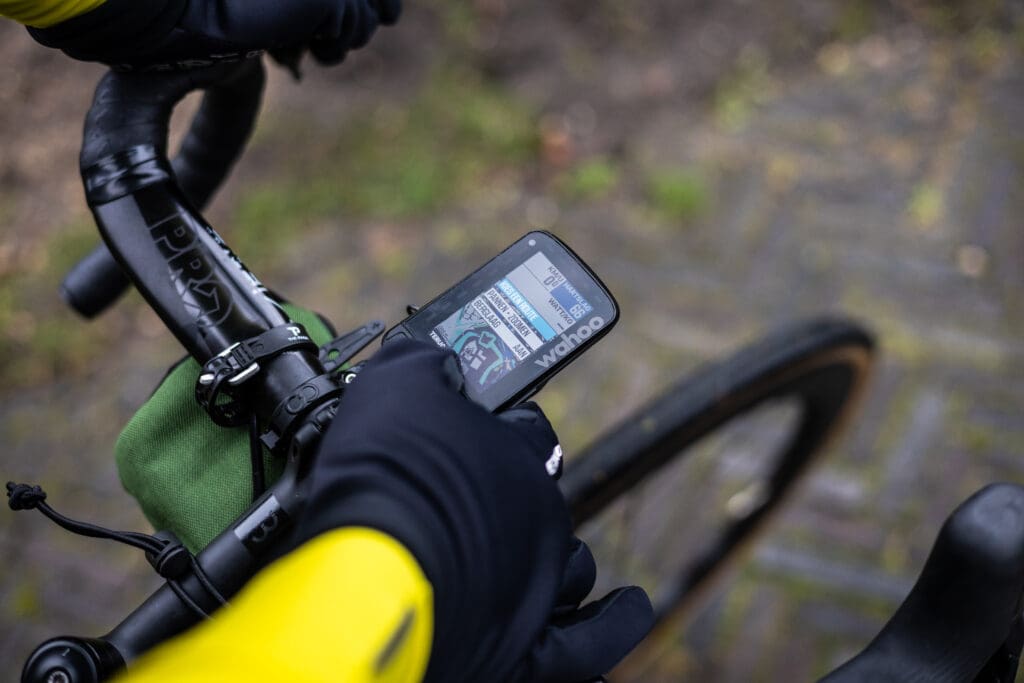
Top-level navigation
Although a bike computer has a lot of functions these days, for many adventurers the navigation is the most important of all. Since I have been cycling with a Wahoo, which is almost four years now, I have never been disappointed by the navigation. Indeed, I have always been able to find my routes, have always been steered back in the right direction when I have missed a turn, and the 'navigate to starting point' function is one of the finest features available. The display is bright and colourful these days and you can zoom in to 100m accuracy. The Turn-by-Turn directions are also clearly visible in the general screen and are accurate to the meter. The navigation screen itself can be customised with up to four different data fields, so you can see the map as well as your heart rate, cadence, speed and any power. Exactly right. In terms of battery: I do about two to three rides with my Wahoo, depending on active use of navigation, length of ride and linked other devices.
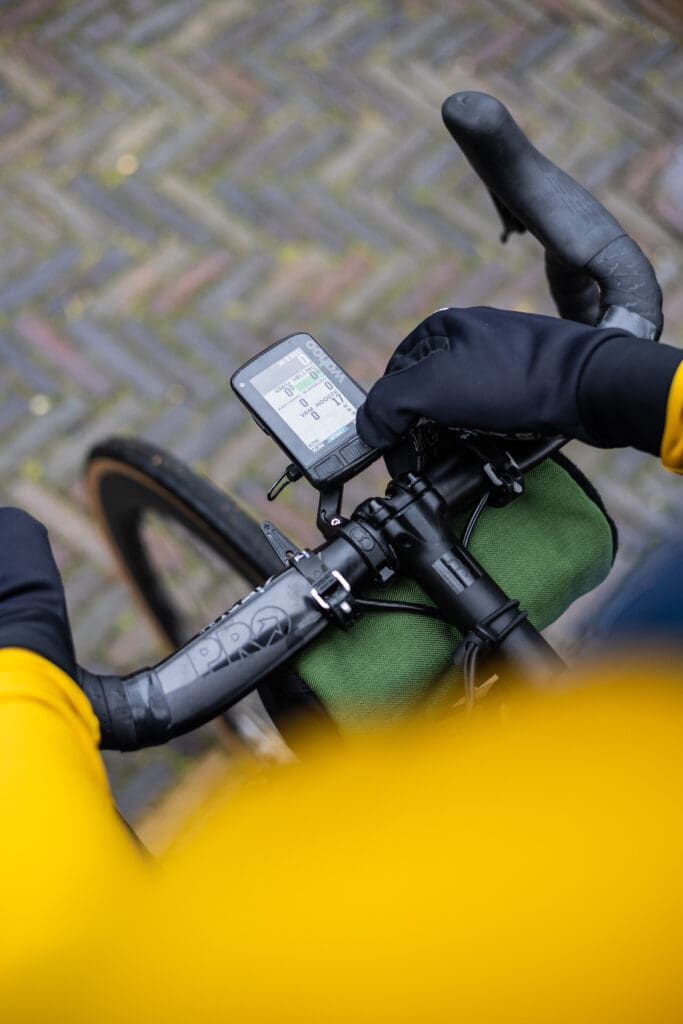
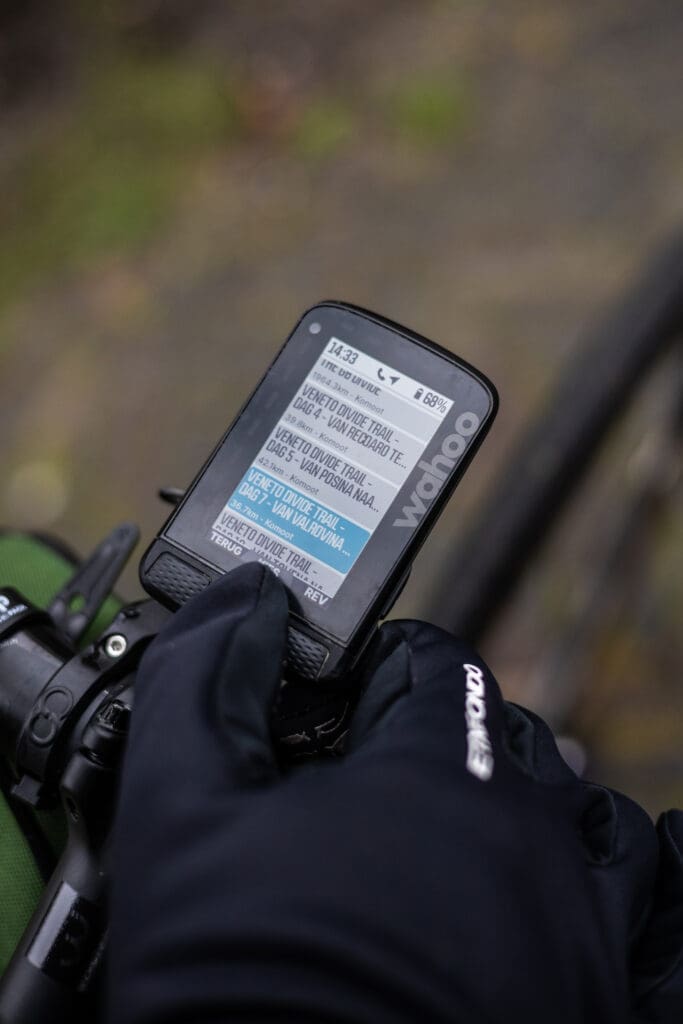
Even more data
Speaking of data fields, things that especially performance cyclists like to see, you can go all out with the Wahoo Element Roam. I myself ride with a 4iii Powermeter and it generates a lot of data. On my data screen, I like to see current speed, average, distance, exercise time, heart rate, average heart rate. power output, cadence, clock and temperature. I also like the average power output, but don't do as much with it anyway. So you can show even more data, but that is sometimes a bit heavy. The TSS (suffer score) is of little use to me and average cadence does not interest me much either. I can understand the option to also log 'lap times', but I have never actually used it. Nice though: altitude metres in the mountains (which are measured in metres 'up' and metres 'down', by the way). Ascent percentages you'd really rather NOT see, but yes, that option is there too, including colours.
Training to the decimal point
We should also talk about training. Because training is also important for many cyclists. These are not just about riding routes and enjoying nature and surroundings. You can often upload your workouts from a training programme, just as you have the option to send, for example, Supersapiens reminders and data to your Wahoo. Workouts you can then load and start anytime. Handy in other words. Just like the time reminders you can set to eat and drink. Training data can again be easily unlocked via one of the many app links, such as, of course, Strava, Trainingpeaks, Ridewithgps and several more.
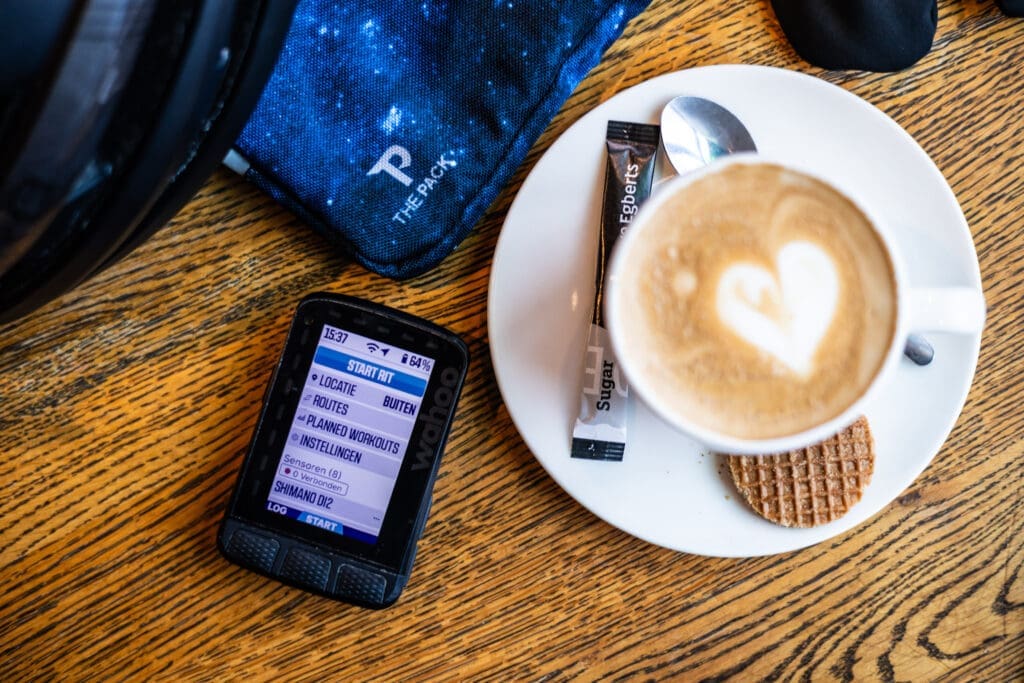
Load routes like a pro
So what you can really use the computer for is driving/navigating routes. I myself use a lot of Komoot and for that there is a handy upload and download function. Simply put: routes you create are automatically synchronised and also your ridden routes are read and uploaded to, for example, Komoot or also Strava. You can also manually upload GPX files via the Element app on the phone. What's also handy: while riding, the app recognises when you're on a climb and immediately shows you how far you still have to go and what the climb looks like. Those elevation profiles are really nice, especially on long climbs in the Alps or Pyrenees. The extra features like 'take me to ...x' or 'saved locations' allow you to create a lot of options for navi yourself.
Small other gadgets
Sometimes you get surprised. I don't normally like that, surprises. But if your Di2 shifting system also allows you to control the menu, from the brake lever, then I am very happy with that. With the right handlebar, you control the button at the bottom right, so at the bottom left. Handy for switching between screens. Do you need it? No, but 'nice to have'. Both Shimano, Campagnalo, and SRAM also offer the possibility to see what gear you are in on your electronic system and the amount of battery left. During your ride, you can also have someone follow you via the Element App, as an emergency contact. Extra handy for when you're out on your own in unfamiliar territory. This beacon function is also in the app Strava, but this way it is free and just as reliable.
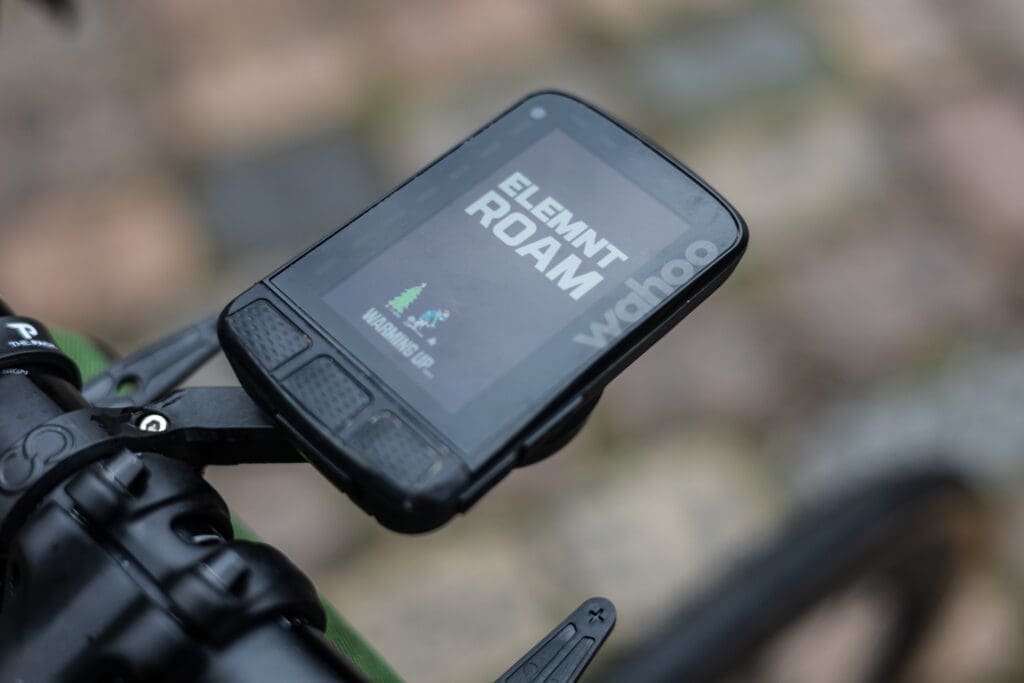
Buy that thing
In short: I could go on for hours and I probably haven't even named all the functions yet. But if you ever want to buy a bike computer and never want anything else afterwards, this is my advice. You buy the bike computer with a handlebar mount that fits almost every handlebar. I myself now have a HideMyBell mount from Close the Gap on it. You can have the speed measured by GPS, but it is most convenient to order the speed and cadence meter as well. That can be done with THIS BUNDEL. This then includes a heart rate monitor, something I always ride with myself. You can also use your own heart rate monitor and speed/cadence meters. Then the computer is already yours from just under €340.
You can find all the technical features of the Wahoo Element Roam v2 here. Of course, the Wahoo works with all kinds of ANT+ or BLE connection options and you can also wirelessly find your way to the World Wide Web with pairing to WiFi.
DISCLAIMER:
Read also: Gear up? An explanation of gear shifting and gear groups

